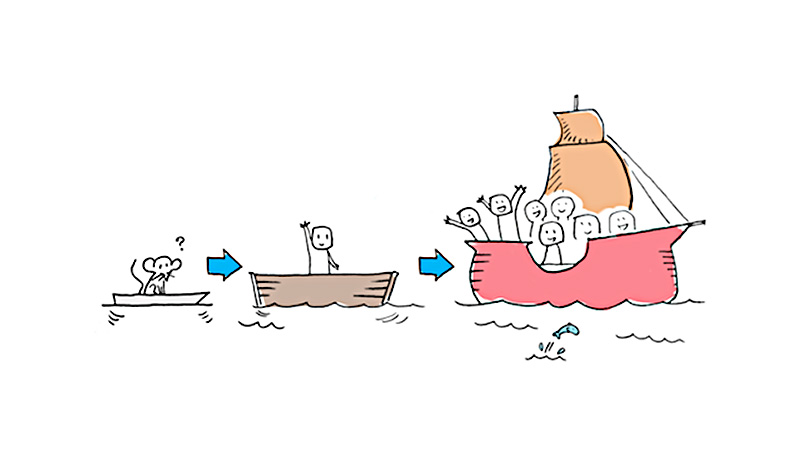
What an MVP really is: prototype or product?
Throughout my career as a product designer, I’ve heard the term MVP (Minimum Viable Product) over and over again, and I’ll be honest: at the beginning, I also had a pretty wrong idea of what an MVP actually is. I thought an MVP was a basic but functional product with the necessary features to satisfy early users. But over time, after making mistakes and learning from them, I started to realize that an MVP isn’t that. An MVP, for me, is more of a prototype, not a final product.
Why a prototype and not a product?
The first time I came across the concept of an MVP, my reaction was to think I needed to build something that, even though not perfect, would be complete enough to launch and start getting feedback. But I quickly realized that doing this could take months, or even longer. And in many cases, this just meant wasting time and resources. Because, what if the market isn’t ready for what we’re offering? What if the product doesn’t solve the problem for users the way we thought?
This is when I started to realize that an MVP shouldn’t be a complete product, but rather a way to learn quickly. An MVP is an experiment, not a final product. Instead of building something big and complex, the best thing is to create something simple enough to get answers from users and learn from them. That’s what really matters.
The MVP as a prototype
The funny thing is that the more I thought about it, the more I realized that what we really need isn’t a polished product, but something with the minimum necessary to validate our ideas. And this is where we’ve made mistakes a few times: we’ve spent months building something only to discover at the end that it wasn’t what users wanted, or it didn’t have the traction we expected. Instead, if we’d started with a simple prototype, we would’ve learned much faster, without wasting time or money.
For example, let’s say you have an idea for a weekly subscription service for exclusive content (like a newsletter or stories). Instead of launching the whole system from the start, you could begin by creating a very simple landing page where you explain the idea, with a clear CTA like “I’m interested” or “Subscribe.” You don’t even need the content ready. Just by capturing those email addresses from interested people, you can measure real interest without spending time building the whole service. Then, with those emails, you can send a small survey or simply ask for feedback to validate if there’s actually demand behind your idea. This is an example of how, with something very basic and in a short time, you can start learning if there’s real interest in what you’re offering.
If you’re a founder and you’ve got an idea in your head, I actually offer a service that’s made for this exact stage. It helps you turn that idea into a high-impact prototype in just 7 days—something real you can use to test, validate, or even pitch to investors. No overbuilding. Just clarity and speed. You can take a look here.
Conclusion
What I’ve learned over the years is that an MVP isn’t a finished product, it’s just a starting point to learn. It’s not about launching a basic version of something we think will be the final product. It’s about creating a prototype, something good enough to test and validate our ideas without making a huge time or money investment. If we adopt this mindset, we can avoid many of the mistakes I made at the beginning and start learning faster. Because in the end, what really matters is what you learn from your users, and that’s what will help us move forward.
